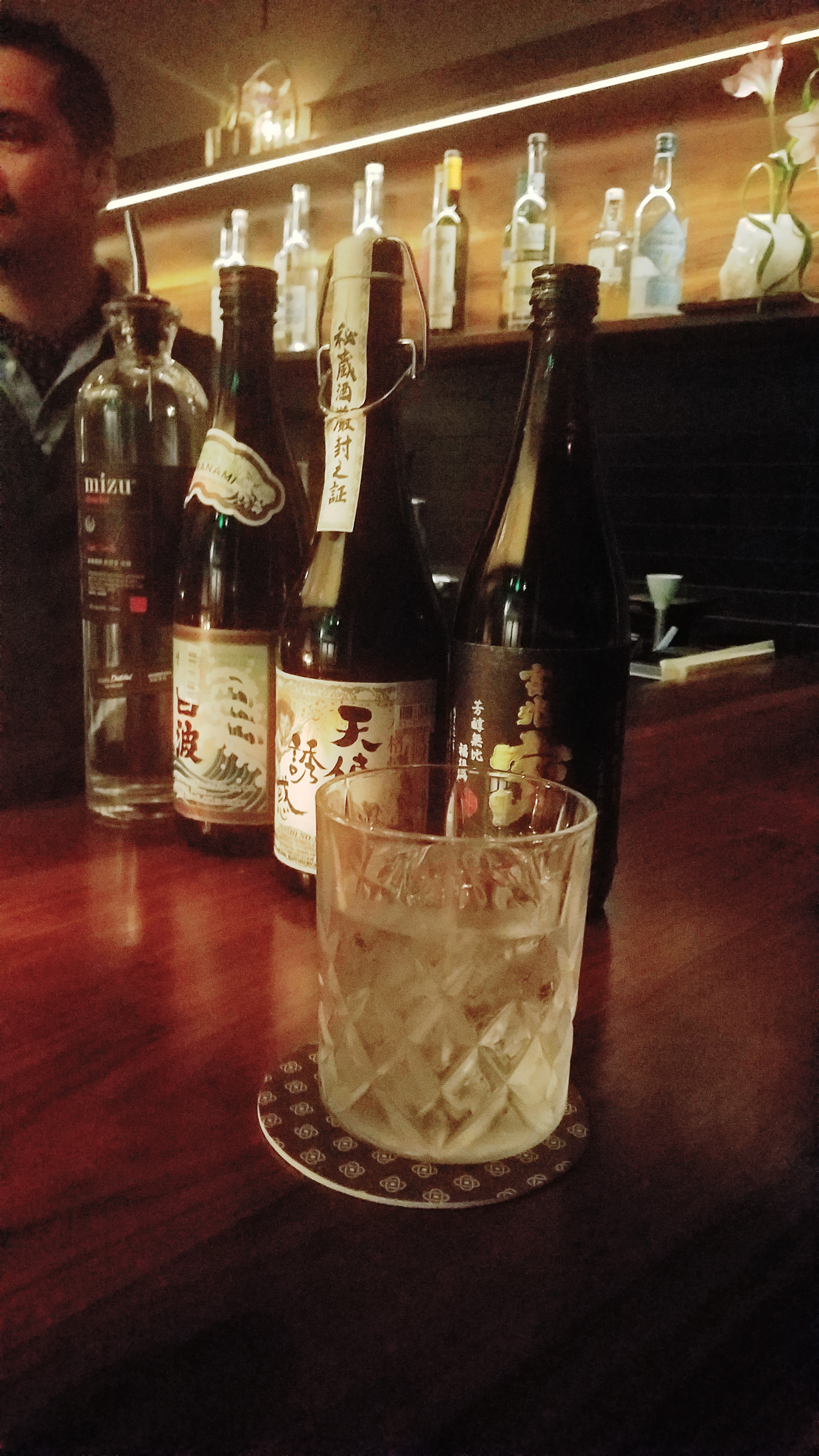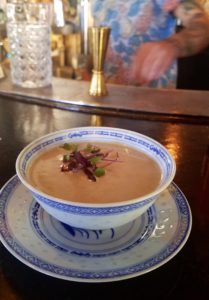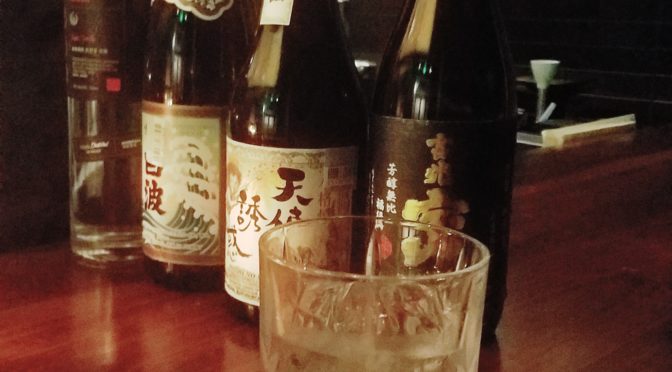
A man and woman sitting at the bar eye the glass curiously at Jettison, in West Dallas, not sure what to make of this liquid they’ve barely heard of, which has been poured over ice. The man picks it up and brings it to his nose. “I can smell the sweet potato,” he says.
The vegetal sweetness is evident on the tongue, too – that’s the beauty of shochu, the centuries-old, national spirit of Japan, which is slowly gaining a steady, if still uncertain, foothold in Dallas-Fort Worth as a casual Japanese food scene blossoms throughout the area.
“Because it’s only one-time distilled, you really taste the base ingredient,” says Jettison’s bar manager, George Kaiho, who grew up in Japan until he was 18. “And potato and rice shochu will taste totally different.”

Shochu’s single distillation keeps its alcohol level between 20 and 25 percent, not as strong as most spirits but still heftier than wine, making it a great accompaniment to yakitori and other small dishes over convivial, leisurely dinners at Japanese izakayas.
“I enjoy the nuance and complexity,” says Justin Holt, sous chef at Lucia in Bishop Arts, who plans to feature shochu at his upcoming restaurant, Salaryman. Shochu’s low-proof nature, he says, means more of them can be sampled in a single sitting – typically as a mix of shochu and soda (or juice, or occasionally iced tea) called a chu-hai, basically a shochu highball (hence the abbreviated name).
Besides rice and sweet potato, the spirit is made from things like soba, sugarcane and, most commonly, roasted barley, giving the category a broad range of flavor profiles, from mild to aggressively earthy.
Barley-based shochu is typically dry and spicy, while sweet potato is at the root of many premium shochus prized for their natural sweetness. Some rice shochus have a mild sweetness similar to sake, though some, Kaiho says, can seem nearly flavorless. The types of yeast used in the fermentation process also play a role in flavor profiles.

While shochu began as a working-class spirit, the global craft spirits trend has ushered in higher quality versions fit for drinking on the rocks, or with water. One brand, a sherry-cask-aged sweet potato shochu called Angel’s Temptation, can sell for as much as a fine whiskey.
In addition to Jettison, you’ll find shochu at Niwa Japanese BBQ in Deep Ellum, Plano’s Yama Izakaya and Irving’s Mr. Max. This being America, its rising availability means bartenders are exploring its use in cocktails: In Uptown, Bowen House features the spirit in its delicious Do, Re, Miso, served in a small bowl, while Oak Lawn’s Izakaya RoMan (at which Kaiho consulted) spins several shochu variations of classics like the Negroni and Martini.
At since-closed Yayoi in Plano, in addition to a number of traditional chu-hai combinations, bartender Lyndsy Rausch blended shochu with matcha, yuzu and soda in her Meet Your Matcha cocktail as well as in a wasabi-spiced Bloody Mary.
“It’s a wonderful liquor that unfortunately is still a little hard to find in Dallas,” Rausch says. “Adding matcha to it was really the first thing that came to mind, because I wanted something earthy to match its complex flavors.”

One reason shochu hasn’t yet found popular footing in the U.S., Kaiho believes, is because there’s no definitive shochu-based cocktail. He sees shochu following a path similar to pisco, the national spirit of Peru, in that it’s easily subbed in cocktails for spirits like vodka or gin – except that it offers the added benefit of being low-proof, a slower-paced option that’s trending around the country.
“In order to popularize shochu, there needs to be a cocktail,” Kaiho says. “If you can make a good cocktail with potato shochu, you’ve got yourself a good cocktail.”
Kaito’s latest shochu cocktail wouldn’t be a bad place to start: His Earth Wind & Fire supplements Shiranami’s sweet potato shochu with a harmony of smoky mezcal, the sweetly vegetal backbeat of Green Chartreuse and a citrusy yuzu tincture. The mezcal and Chartreuse boost the drink’s alcohol content while still allowing the earthy shochu to take the lead.
Thankfully, the sweet potato flavor is strong enough to meet the task, since, as bartender Tommy Fogle of Industry Alley in the Cedars notes, many shochus are so subtle that they’re better off being consumed straight.
“I feel like shochu is so light and delicate, it gets lost really easily,” Fogle says as he pours a sample. “Why put it in a cocktail? The point of this is to buy a bottle with a buddy and just take shots until the bottle is gone.”
